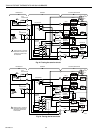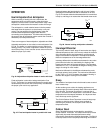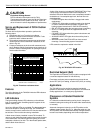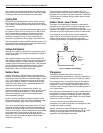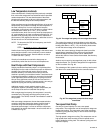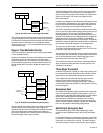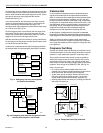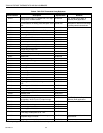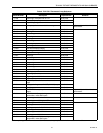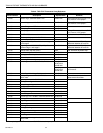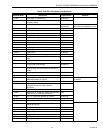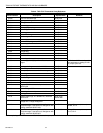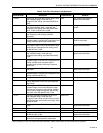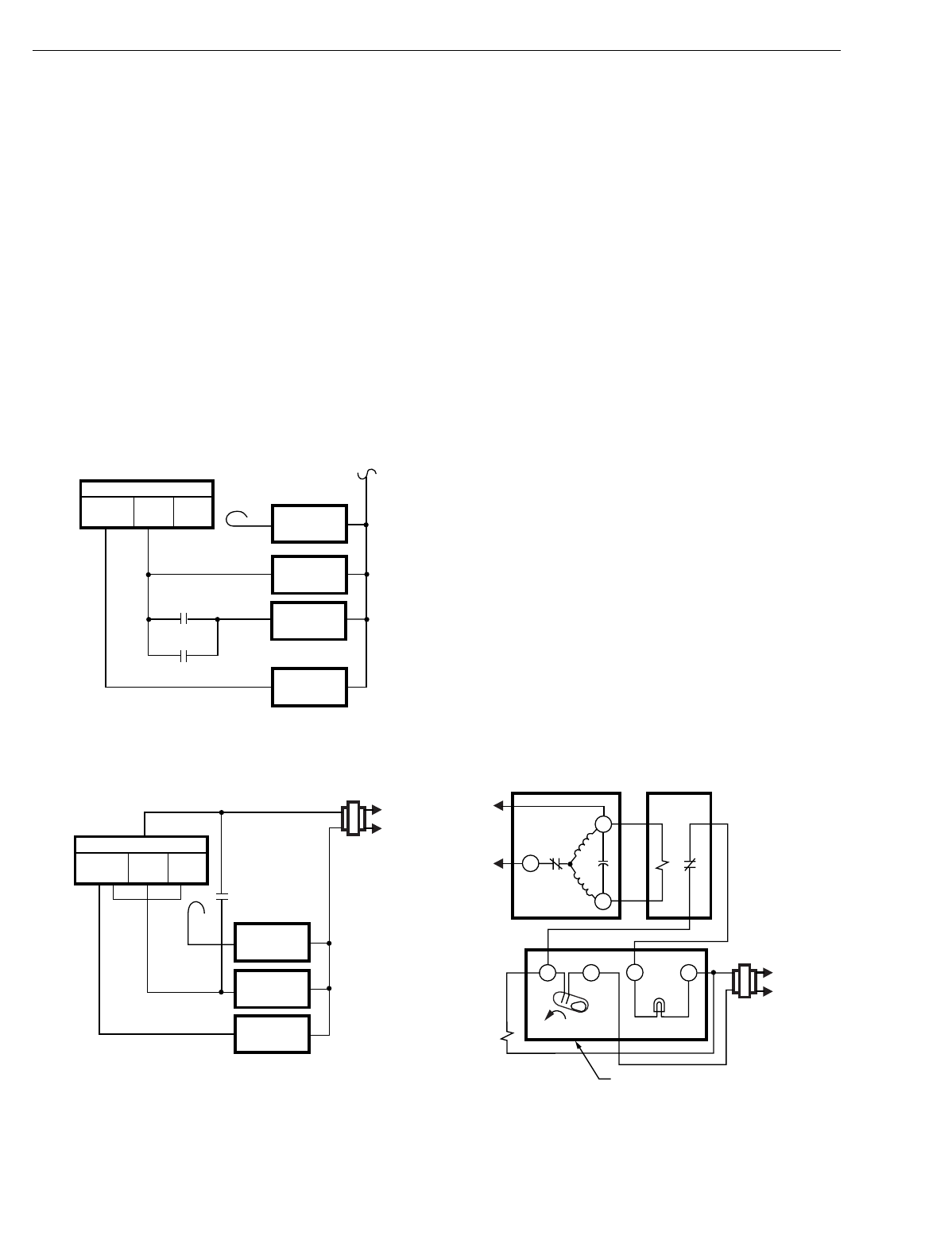
T874 MULTISTAGE THERMOSTATS AND Q674 SUBBASES
60-2485—828
the thermostat. A set of contacts on the emer
g
enc
y
heat rela
y
is used to b
y
pass each outdoor thermostat so that all electric
heat is under immediate thermostat sta
g
e-two control. So the
emer
g
enc
y
heat rela
y
simpl
y
b
y
passes the outdoor
thermostats. See Fi
g
. 41.
In the
second
method, the emer
g
enc
y
heat relay is cycled
directl
y
b
y
the thermostat mercur
y
bulb. In this hookup, the
rela
y
is controlled b
y
the thermostat
first stage
. The
emer
g
enc
y
heat rela
y
ener
g
izes all of the auxiliar
y
heat rela
y
s
on a call for heat. See Fi
g
. 42.
So the emer
g
enc
y
heat is controlled b
y
the first sta
g
e of the
thermostat. The emer
g
enc
y
heat rela
y
ener
g
izes all of the
electric strip heaters so the heat and the indoor fan come on
to
g
ether as soon as the first sta
g
e calls for heat.
With the first method, the fan remains on
(
bein
g
controlled b
y
the first sta
g
e of the thermostat
)
and the electric heaters c
y
cle
on and off with the second sta
g
e.
In either case, a subbase indicator li
g
ht is turned on whenever
the function switch is in the emer
g
enc
y
heat
(
EM.HT.
)
position.
Fig. 41. Emergency heat relay that bypasses
the outdoor thermostats.
Fig. 42. Emergency heat relay that energizes all of the
auxiliary heat relays on a call for heat.
Crankcase Heat
In an
y
mechanical refri
g
eration s
y
stem, refri
g
erant tends to
mi
g
rate to the coldest part of the e
q
uipment and condense
there. In a heat pump, this coldest spot could be the compressor
because it is usuall
y
outdoors. In addition, the oil in the com-
pressor crankcase is capable of absorbin
g
a hi
g
h concentration
of refri
g
erant. On compressor startup, there are two risks:
(
1
)
the
li
q
uid refri
g
erant, which is noncompressible, can be drawn into
the c
y
linder, and
(
2
)
considerable oil can be entrained in the
refri
g
erant and swept out of the crankcase throu
g
h the
chan
g
eover valve and dispersed in the pipin
g
and coils.
So the mi
g
ration of refri
g
erant to the crankcase is undesirable
because it can interfere with s
y
stem lubrication and because the
li
q
uid refri
g
erant must be kept from
g
oin
g
throu
g
h the compressor.
Addin
g
a crankcase heater creates enou
g
h temperature
differential to prevent this mi
g
ration because the compressor
is no lon
g
er the coldest part of the s
y
stem so refri
g
erant does
not mi
g
rate to it.
Compressor Fault Relay
Another ver
y
simple method of detectin
g
a compressor failure
has been developed. It uses the volta
g
e developed across the
capacitor in a permanent split capacitor compressor motor.
The principle involved is that virtuall
y
all serious problems
reduce the volta
g
e across the motor capacitor. B
y
carefull
y
selectin
g
the correct coil volta
g
e, the normall
y
closed rela
y
does not pull in unless the proper volta
g
e builds up across the
capacitor, which brin
g
s on the SERVICE LED. See Fi
g
. 43.
Here is how it works:
• On a call for coolin
g
, the thermostat makes R to Y, the
contactor coil is powered, and the compressor motor turns on.
• At the same time, the indicator li
g
ht is ener
g
ized.
• As the motor
g
ets up to speed—about one second, the
fault rela
y
sees enou
g
h volta
g
e to pull in. Its normall
y
closed contact opens and the indicator li
g
ht
g
oes out.
• An
y
thin
g
that prevents the motor from runnin
g
prevents the
fault rela
y
from pullin
g
in.
Fig. 43. Compressor fault relay schematic.
M5833
COMPRESSOR
THERMOSTAT
FUNCTION
SWITCH
HEAT 2
HEAT 1
EMERGENCY HEAT
RELAY CONTACT
EMERGENCY
HEAT RELAY
AUXILIARY
HEAT RELAY 1
AUXILIARY
HEAT RELAY 2
OUTDOOR
THERMOSTAT
M5832
COMPRESSOR
THERMOSTAT
FUNCTION
SWITCH
HEAT 2
HEAT 1
EMERGENCY
HEAT RELAY
CONTACT
24 V
EMERGENCY
HEAT RELAY
AUXILIARY
HEAT RELAY
RISE
L1
(HOT)
L2
M5831
COMPRESSOR MOTOR
FAULT RELAY
YR
L
X
LED
CAP.
RUN
START
S
R
C
L1
L3
CONTACTOR
THERMOSTAT-
SUBBASE



